The Intel Core Ultra 7 155H Review: Meteor Lake Marks A Fresh Start To Mobile CPUs
by Gavin Bonshor on April 11, 2024 8:30 AM ESTASUS Zenbook 14 OLED UX3405MA: Rendering & Simulation Performance
Rendering tests are often a little more simple to digest and automate than others. All the tests give out some sort of score or time, usually in an obtainable way that makes it fairly easy to extract. These tests are some of the most strenuous in our list due to the highly threaded nature of rendering and ray-tracing, and they can draw a lot of power. Power isn't so much a problem on mobile platforms, but rendering performance and how it relates to varied workloads such as video editing, is still a vital part of overall performance.
Different from rendering, in our Simulation section, these tests act more like synthetic benchmarks but, at some level, are still trying to simulate a given environment.
For this review, we have included the AMD Ryzen 9 7940HS, which includes the same Radeon 780M integrated graphics, along with the Ryzen 5 8600G, which uses the AMD Phoenix mobile architecture but is adopted for desktops. This allows us to show more data points for our review of Intel's Meteor Lake-based Core Ultra 7 155H to see where performance lies.
Despite including AMD's Phoenix-based Ryzen 8000G APUs in our results, as we expand our list of notebooks tested, we'll have more effective and comparable data points in the future. To add more reference, all of the chips have been tested with Windows 11 22H2.
Rendering
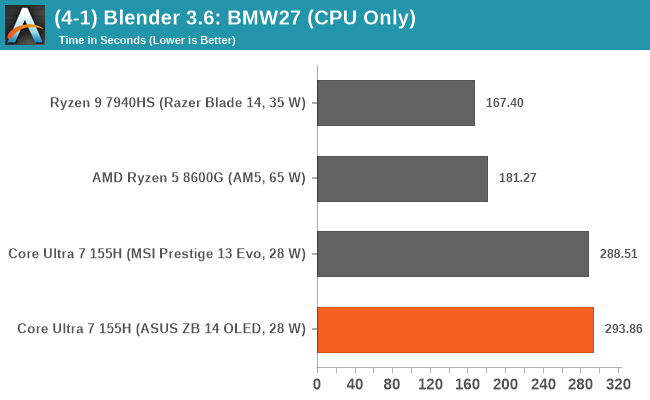
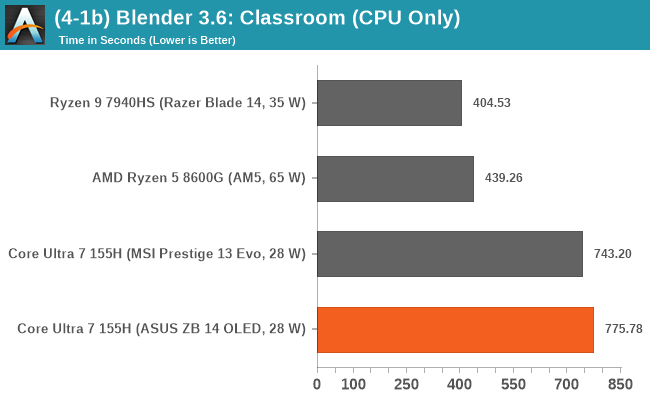
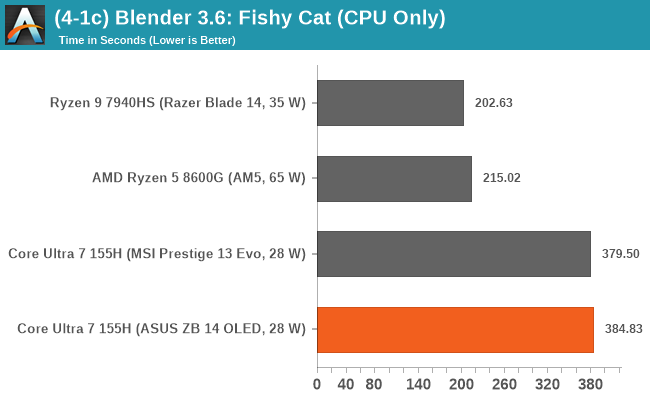
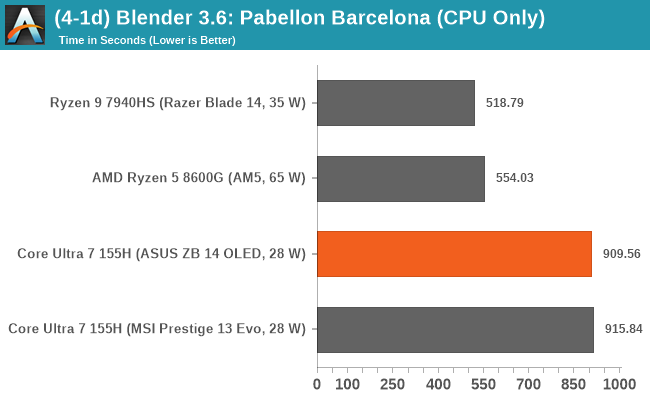
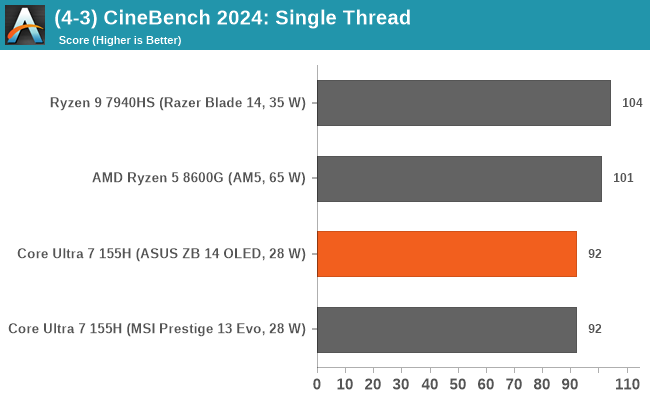
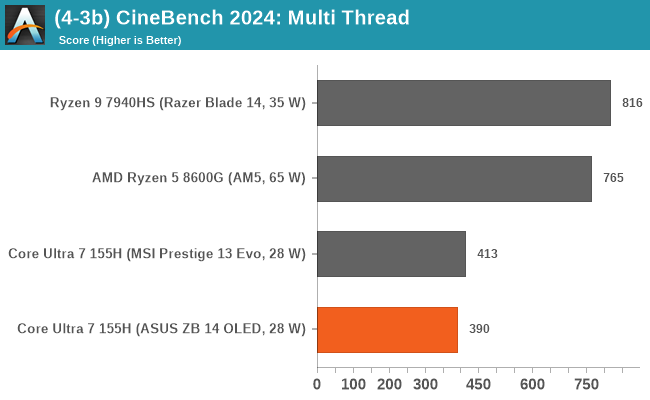

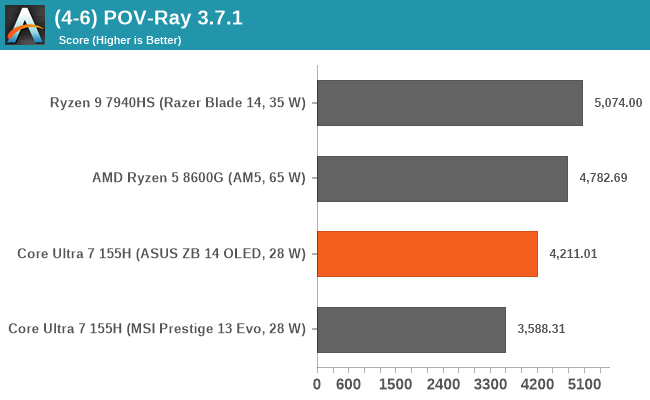
As we can see from our rendering results, the Intel Core Ultra 7 155H is quite competitive in single-threaded performance and is a little behind AMD's Zen 4 mobile Phoenix-based Ryzen 9 7940HS. The situation changes somewhat when we move to multi-threaded performance, with the Meteor Lake notebooks lagging behind in all Blender 3.6 tests. Things look better in our POV-Ray test, with a competitive showing, and there is a similar situation in the V-Ray benchmark.
Simulation
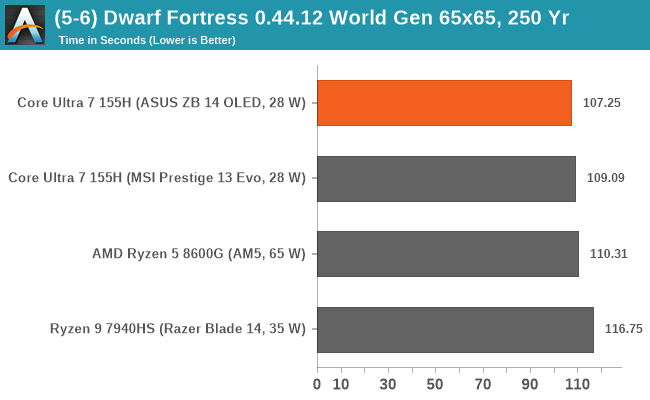
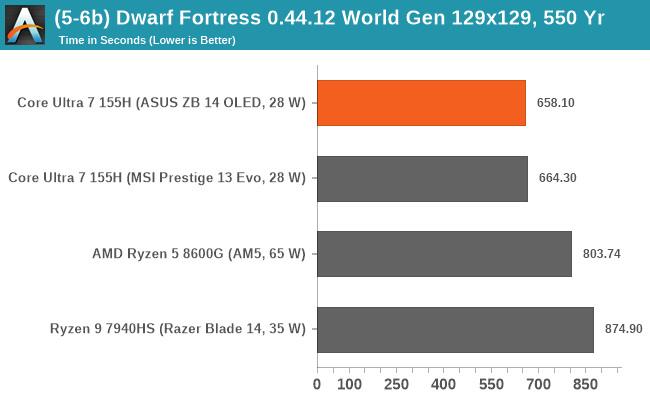

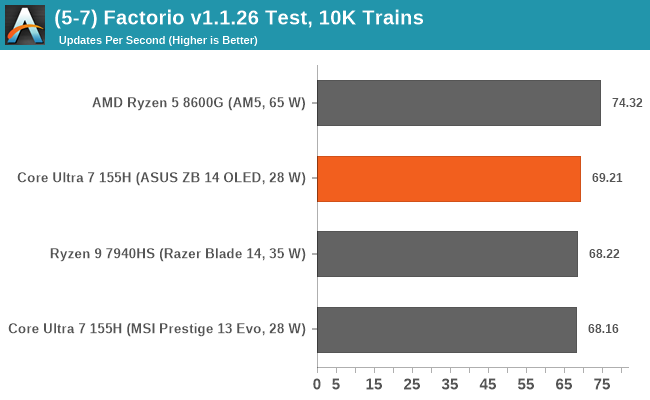
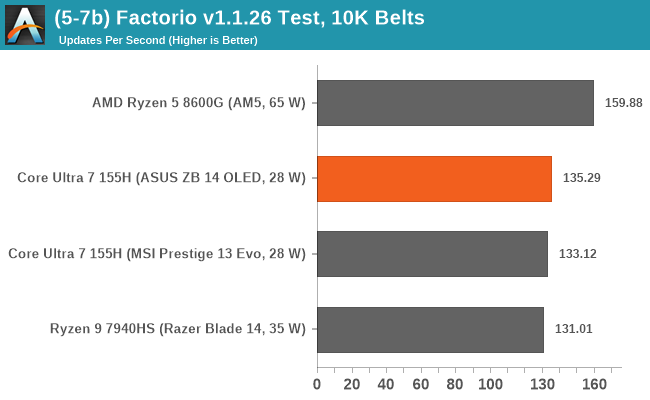
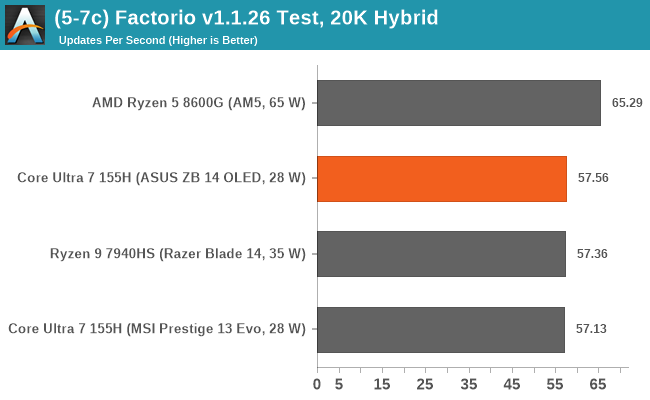
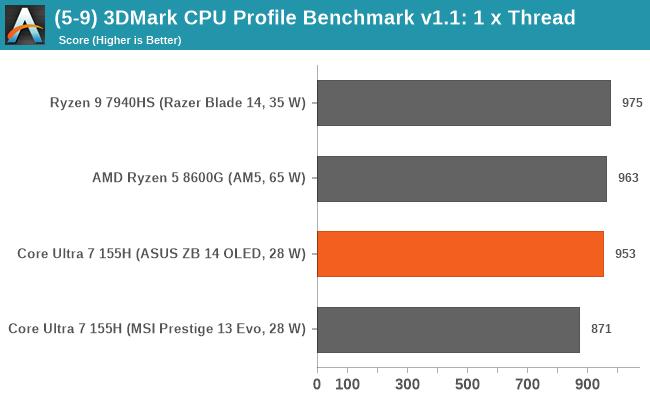
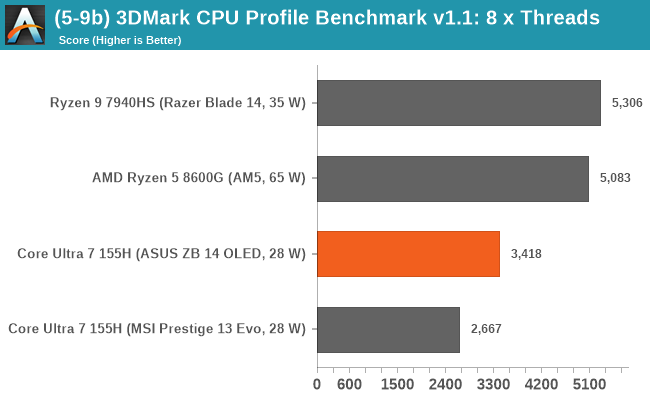

Our simulation benchmarks show that the Intel Core Ultra 7 155H outperforms the Ryzen 9 7940HS and even the desktop Ryzen 8000G series processors in Dwarf Fortress. In our Factorio tests, Meteor Lake is also very competitive with the AMD Phoenix-based chips, although the AMD chips perform better in the 3D Mark CPU profile with maximum threads.










69 Comments
View All Comments
lmcd - Wednesday, April 17, 2024 - link
That GloFo combo for Zen 2 and 3 never made it to an efficient mobile platform (HX technically exists but whatever).Intel 4 is an incomplete node. Intel 3 had better fix a lot of the issues because at this point, Intel's best bet looks like an entirely-TSMC SoC. Reply
James5mith - Friday, April 12, 2024 - link
"Meanwhile AMD does not offer a custom execution backend for this test, so while Windows ML is available as a fallback option to access the CPU and the GPU, it does not have access to AMD's NPU."So why are there no graph entries for the AMD GPU using Windows ML? You only show CPU results in the graph. Seems a bit disingenuous. Reply
Tams80 - Friday, April 12, 2024 - link
This is really a rather pathetic comparison. YouTubers can get their hands on more devices for comparison than this.I get it. AnandTech is a dying publication that doesn't have the influence it used to, to get devices. And this also leads to particularly fluffy pieces to appease the few companies that do provide review units. Reply
The Von Matrices - Friday, April 12, 2024 - link
How can a PCIe 4.0 x2 disk have a read speed of 5GB/s? The bus only has a transfer rate of 4GB/s. Replyskavi - Saturday, April 13, 2024 - link
> Starting with the Redwood Cove (P) core cluster on the Core Ultra 7 155H, we can see that the core-to-core access latencies across the P-cores ranges from 4.5 to 4.9 ns, which is very similar to that of Raptor Lake via the Core i5-14600K, which sits between 4.6 and 4.9 ns; this indicates that both have the same P-core topology.By core to core, you mean intercore, right? or hyperthread to hyperthread?
> For the E-cores, the latencies shoot up to between 57.9 and 74.8 ns per each L1 access point, with the two first E-cores having a latency of just 5.0 ns.
Am I going crazy? It seems obvious to me those “two first E-cores” are a single P-core. Reply
jpvalverde85 - Tuesday, April 16, 2024 - link
AI compute capability is just there, then the big cores are just good enough against Zen4, the IGP just as strong on the best scenario (drivers can get the better out of it but still weak on some titles), now overall if we cut IA outside, Meteor Lake gets spanked badly by a gen old Ryzen. The good is that everything seems to work even coming in different tiles for being a tech demo, but i suspect that the BOM of the Ryzen 9 7940HS is lower being a monolithic 180mm2 design, Intel probably had to spent a lot of "glue" per mm2 of silicon. Replylmcd - Wednesday, April 17, 2024 - link
The glue might not be cheap but TSMC 6nm sure is, and 5nm isn't wildly expensive either.This Intel 4 tile though is clearly so far from finished. This is a horrifying showing for Intel Foundry's fab capabilities even if their packaging is clearly fantastic. And we are so overdue for the current larger cores to get dropped and the design roadmap for Atom forked into a large and small core. Reply
shady28 - Wednesday, April 17, 2024 - link
Like other mentioned, these aren't comparable products.That really shows up when you look at the battery life comparisons. The 155H has a 75W-H batter vs 69W-H on the 7940HS, 9% more capacity. Yet it lasts 95% longer in the rundown test.
That's going to show up in performance too.
HotHardware has a much better comparison, a 165H against comparable products like the 7736U and Z1 Extreme (30W TDP), as well as last gen RL 1365U (15W / 55 max).
The 165H had the longest battery life in their test of any machine tested, 1/3 more than the Z1 Extreme. Reply
kkilobyte - Wednesday, April 24, 2024 - link
Have the SPEC2017 tests been adapted? The text still says to this day that the results will be adapted when they are available. Reply